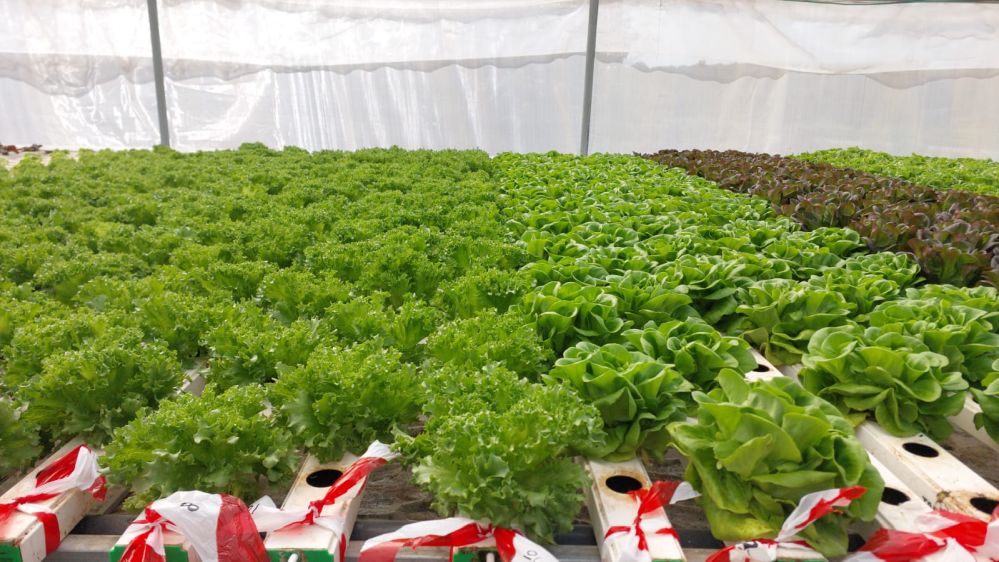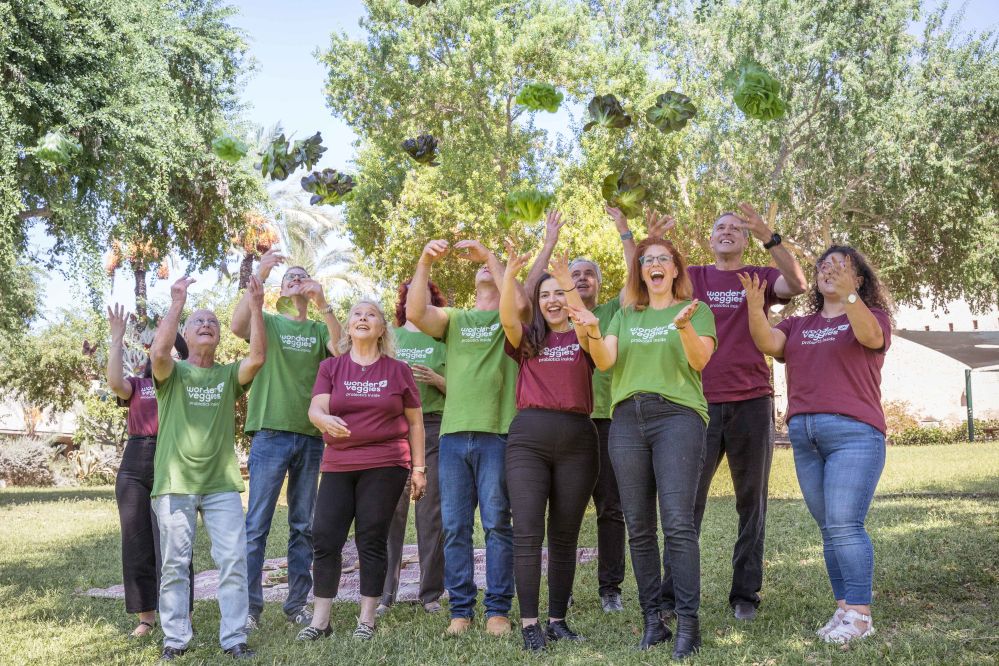Israeli agrifoodtech startup Wonder Veggies is aiming to launch the “world’s first probiotic fresh produce” with partners next year using technology enabling probiotic bacteria to penetrate plant tissue and serve as endophytes (microbes that live inside plants).
Colloquially referred to as ‘good bacteria,’ probiotics are defined by the International Scientific Association for Probiotics and Prebiotics as “live microorganisms that when administered in adequate amounts confer a health benefit on the host,” spanning everything from gut health to immune health.
Given the fragility of most probiotic strains, however, applications remain largely limited to dietary supplements or refrigerated dairy products, although some more robust spore-forming strains such as BC30 can be added to a wider range of foods.
“Current options for consuming probiotics are extremely limited,” says Wonder Veggies cofounder and CEO Danny Weiss. “Dairy products are not suitable for lactose intolerant or vegan consumers; fermented foods like kimchi are pretty niche; and food supplements are costly and hard to swallow for some consumers.”
By taking probiotics into the fresh produce aisle, Wonder Veggies is creating a “completely new category” that is easy to build into consumers’ daily routines, says Weiss. Incorporating probiotics into plant tissue also protects them from stomach acid and provides a substrate (plant fiber) for them to eat when they reach the large intestine, creating a synbiotic effect.
WHAT ARE PROBIOTICS? According to the World Health Organization, probiotics are “live microorganisms that, when administered in adequate amounts, confer a health benefit on the host.”
When you think about probiotics, you need to think about the genus, the species and the strain (and no two strains are the same), says the International Probiotics Association. For example, for Lactobacillus rhamnosus GG (often referred to as LGG), the genus is Lactobacillus, the species is rhamnosus and the strain is GG.
WHAT ARE PREBIOTICS? According to the International Scientific Association for Probiotics and Prebiotics (ISAPP), a prebiotic is: “a substrate that is selectively utilized by host microorganisms conferring a health benefit.”
WHAT ARE POSTBIOTICS? A consensus statement from ISAPP defines postbiotics as “a preparation of inanimate microorganisms and/or their components that confer health benefits on the host.”

How it works…
Building on the research of Prof. Oded Shoseyov and Prof. Betty Schwartz at the Hebrew University of Jerusalem and Dr. Lilach Iasur Kruh at Braude Academic College, Wonder Veggies has developed a liquid formulation combining probiotic bacteria (established strains from leading suppliers) and undisclosed food-grade ingredients that serve as processing aids.
This is then sprayed onto fresh produce pre-harvest in the field or greenhouse or post-harvest at packing facilities by its partners in the fresh produce industry, who are supplied with formulations and application protocols, explains Weiss.
“All the ingredients in our formulation are GRAS or self-GRAS and authorized for use in organics, and they have no impact on the organoleptic properties of the final products.”
Wonder Veggies’ first granted patent covers fresh produce including endophytic probiotic bacteria, “which is very broad,” says Weiss. “The essence of our technology is how we turn probiotic bacteria into endophytes in fresh produce.”
Anyone can spray probiotics on leafy greens or cucumbers, he observes, “but they will not survive. Our formulation allows the probiotics to immediately penetrate the tissue, propagate there, and survive throughout the entire shelf life. You need reasonable coverage when you spray but not 100% because there is some movement of the probiotic inside the tissue.”
Implementation is designed to be as straightforward as possible, says Weiss, who says Wonder Veggies’ probiotic formulations will be supplied to partners as a liquid concentrate to which water is added prior to application.
“In a bagged salad facility for example, leafy greens are typically cut and then sanitized and rinsed with water and then dewatered, packed and shipped,” he says. “Our process comes in after the rinsing and can be applied by the same equipment – so tanks of water, sprayer, standard equipment. The ratio of concentrate to water is dependent on the type of the produce but it’s around 1:100.”
Tech has been tested on multiple types of fresh produce
To date, Wonder Veggies has tested its tech with multiple strains of probiotic bacteria (the benefits of which are strain-specific) and multiple types of produce, from leafy greens and baby carrots to berries, cherry tomatoes, and baby cucumbers, says Weiss.
“This is a world first. It taps into growing interest in probiotics and the ‘food as medicine’ trend.”
He adds: “When I first came across what they [Shoseyov, Schwartz and Kruh] were doing I was blown away. I spoke to my friend Gadi Lesin [former CEO at leading Israeli food co Strauss Group] and he said this is going to be huge, but there are two conditions.
“One, how much fresh produce do you need to eat to get the same benefits as eating a Danone Actimel yogurt? If it’s going to be a small personal salad, that’s great. If it’s boxes and boxes of lettuce, it’s not going to work. Second, what’s the price premium? People will pay 20-40% for various enriched food products, but if it’s going to require a 100% premium, it will be a very small niche.
“And luckily, we can answer both questions. You can get the probiotics you need with a small personal salad and the premium will be 20% or less, which is enough for all the players in the value chain… the retailers, the growers, and Wonder Veggies to get a return.”
Lasin, claims Weiss, “was so excited that he asked if we would have him as a cofounder, so actually, we have five cofounders: three scientists, Gadi, and me. We started our journey in March 2022 and raised a $3 million seed investment from JVP, one of the largest VCs in Israel.”
The go to market strategy is “something we are working on with growers,” says Weiss, who is about to start raising a fresh round. But the likely plan is to “put our brand next to the grower brand on the packaging. We also plan to explore combos, so produce with more than one probiotic strain.”
He adds: “We have already executed a few MOUs [memorandums of understanding] with leading growers globally and we have had several discussions with leading retailers in the US who are asking us how soon can we get these products onto our shelves? They see the [traction of the] gut health trend and see that we’re creating a completely new category of probiotics.”
As for the stains, he says, “We are using a couple of Bacillus Coagulans strains and Lactobacillus Plantarum but since we have a platform technology we are evaluating a few others. Nothing has been formalized yet for the launch.”

A more effective delivery mechanism?
Asked about temperature controls, Wonder Veggies has experimented with spore-forming and non spore-forming probiotic strains in ambient conditions, in some cases drying and grinding the produce, and found that the strains remained viable, claims Weiss.
“I can’t tell you that this would be the case with every single probiotic strain, but it appears to be the case on a fairly large number of strains we have already tested.”
It is not up to Wonder Veggies to prove the benefits of the probiotics themselves, he said, given that it is using well-established strains for which other companies have put in the spadework. The key is showing that its delivery system (fresh produce) can protect the probiotics through the gastrointestinal tract, he says.
“We have been using the artificial stomach system at the Technion [Israel Institute of Technology] to test our probiotic lentil sprouts against [market leading probiotic brand] Danone Actimel. The Actimel products had more CFUs (colony forming units) per gram at the point of consumption, but our sprouts actually had more probiotics per gram than Actimel at the end of the process because we the fibers in the plants seem to protect them better in the stomach.”
Further reading:




